Global firefighter simulator training services market is estimated to be valued at USD 13.92 Bn in 2025 and is expected to reach USD 20.40 Bn by 2032, exhibiting a compound annual growth rate (CAGR) of 5.6% from 2025 to 2032.
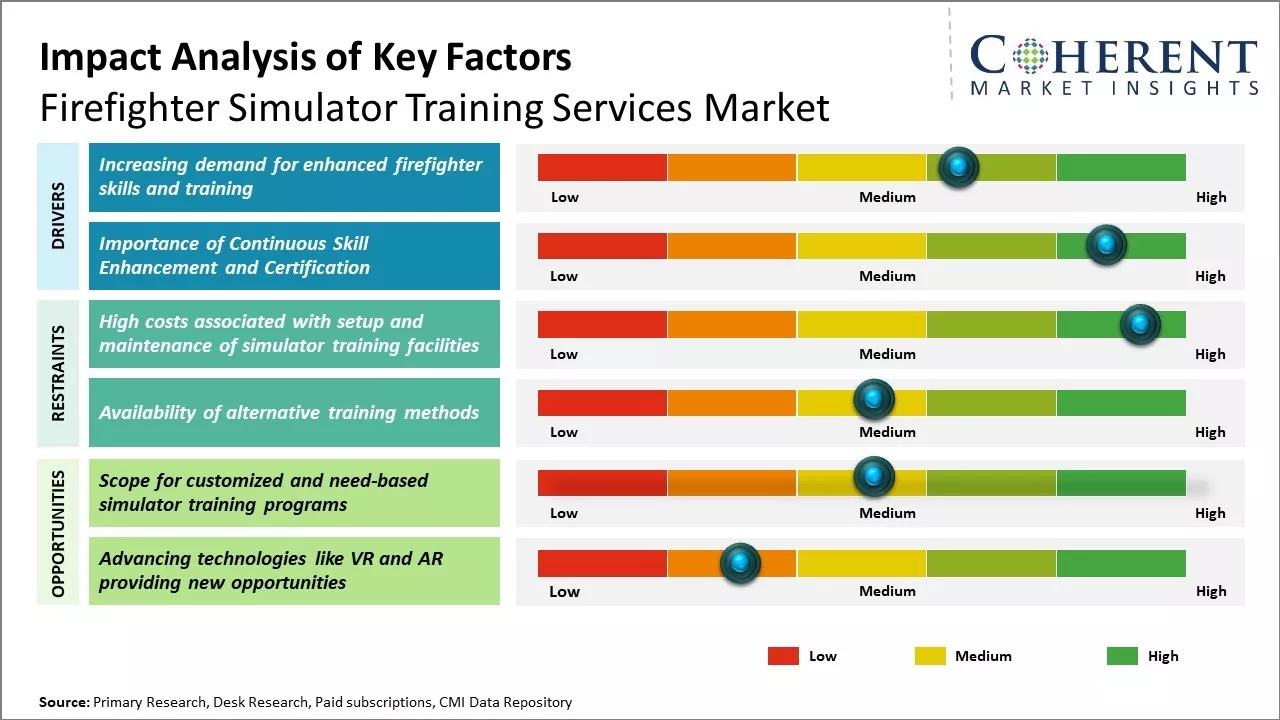
Discover market dynamics shaping the industry: Request sample copy
Global firefighter simulator training services market is expected to witness significant growth during the forecast period due to rising number of fire-related incidents across the globe owing to rapid urbanization and industrialization. Furthermore, growing awareness about benefits of simulator-based training such as inherent safety, flexibility and cost-effectiveness also boosts demand. Various advancements in technology such as integration of virtual reality (VR) and artificial intelligence (AI) to provide highly realistic training scenarios is expected to propel the market growth during the forecast period. However, requirement of high capital investment and technical expertise for installation and operation of firefighter simulators can hamper the market growth.
Increasing demand for enhanced firefighter skills and training
There is growing recognition among fire departments and organizations worldwide about the need for firefighters to constantly upgrade their skills and training. Traditional methods of on-job training are no longer sufficient to deal with the new challenging scenarios that firefighters often face. Fires today can spread much more quickly due to newer construction materials and growing urbanization. Moreover, modern buildings pose unique safety hazards due to the presence of newer chemicals, gases and electrical networks. This means that firefighters need to be better equipped to assess risk, make quick decisions and handle complex emergencies.
Advancements in technologies such as virtual reality and augmented reality allows firefighter training programs to simulate real-life fire scenarios in a very realistic manner. Trainees can learn how to maneuver inside burning buildings during a simulation without putting themselves in actual danger. These can also train for various crisis situations such as multi-storey fires, chemical plant explosions, and natural disasters through immersive virtual environments. Using these advanced simulations is a great way to make learning stronger compared to traditional classroom training.
It also provides administrators an objective way to assess each trainee's performance under pressure. As the risks faced by firefighters continue to rise globally, there is immense value in incorporating cutting-edge simulation techniques into regular training curriculum.
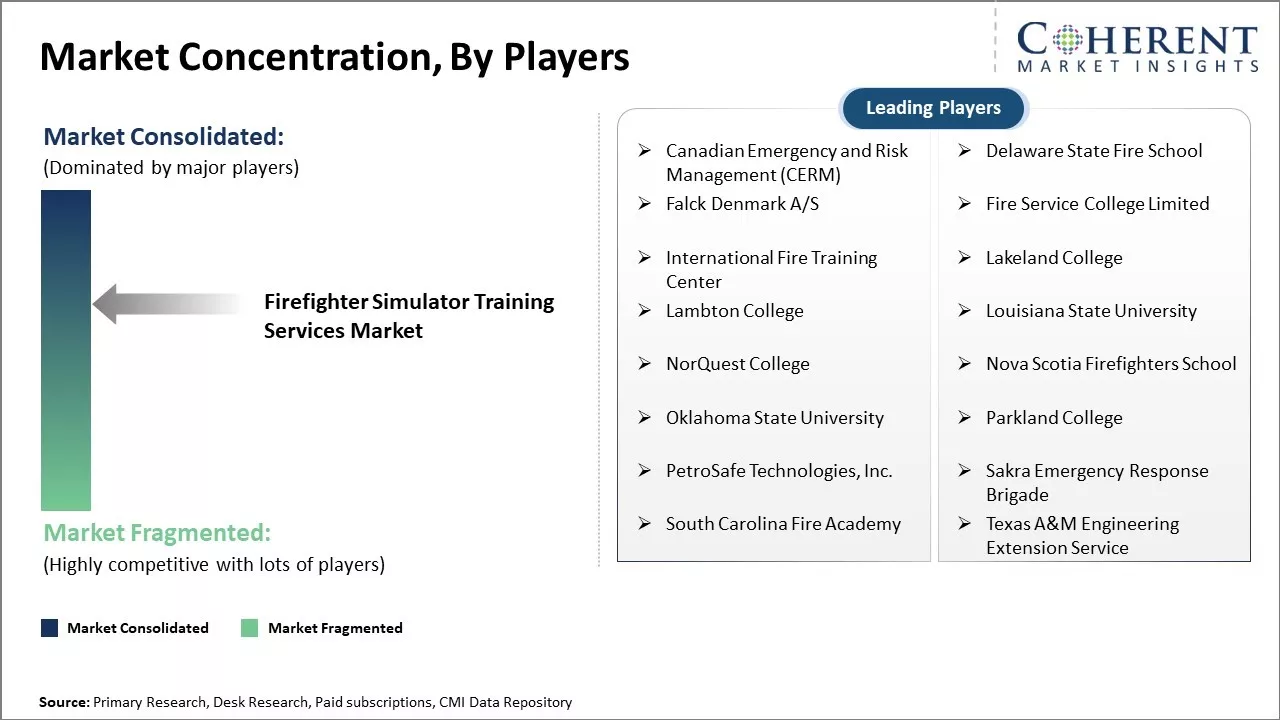
Get actionable strategies to beat competition: Request sample copy
Increasing demand for enhanced firefighter skills and trainingThere is growing recognition among fire departments and organizations worldwide about the need for firefighters to constantly upgrade their skills and training. Traditional methods of on-job training are no longer sufficient to deal with the new challenging scenarios that firefighters often face. Fires today can spread much more quickly due to newer construction materials and growing urbanization. Moreover, modern buildings pose unique safety hazards due to the presence of newer chemicals, gases and electrical networks. This means that firefighters need to be better equipped to assess risk, make quick decisions and handle complex emergencies.
Advancements in technologies such as virtual reality and augmented reality allows firefighter training programs to simulate real-life fire scenarios in a very realistic manner. Trainees can learn how to maneuver inside burning buildings during a simulation without putting themselves in actual danger. These can also train for various crisis situations such as multi-storey fires, chemical plant explosions, and natural disasters through immersive virtual environments. Using these advanced simulations is a great way to make learning stronger compared to traditional classroom training.
It also provides administrators an objective way to assess each trainee's performance under pressure. As the risks faced by firefighters continue to rise globally, there is immense value in incorporating cutting-edge simulation techniques into regular training curriculum.
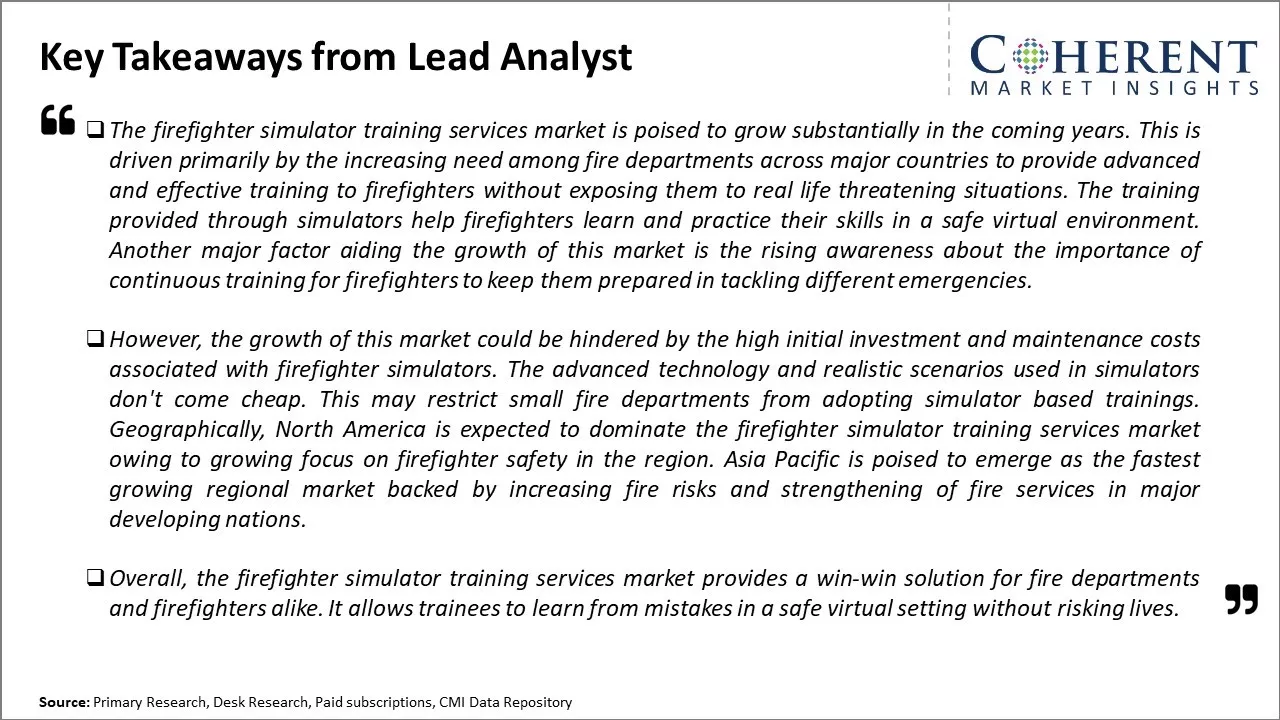
To learn more about this report, Request sample copy
Market Challenge: High costs associated with setup and maintenance of simulator training facilitiesOne of the main challenges faced by firefighter simulator training services market is the high investment and maintenance costs associated with setting up realistic fire simulation facilities and equipment.
As the simulation technology advances, the costs continue to rise which can impact the adoption rates. Additionally, with new risks and hazards emerging constantly, keeping the training programs and simulations up-to-date is a major challenge. Trainer availability and developing truly immersive training experiences are also ongoing issues for this market.
Market Opportunity: Scope for customized and need-based simulator training programs
Global firefighter simulator training services market witness growth opportunities by expanding training simulation capabilities. More life-like simulations incorporating VR/AR and advanced haptics allow for replicating an even wider range of emergency scenarios.
There is also scope for developing customized training modules for specific hazards. Partnerships with fire departments can help increase the scale and outreach of training programs. Rising awareness about the benefits of simulator-based training
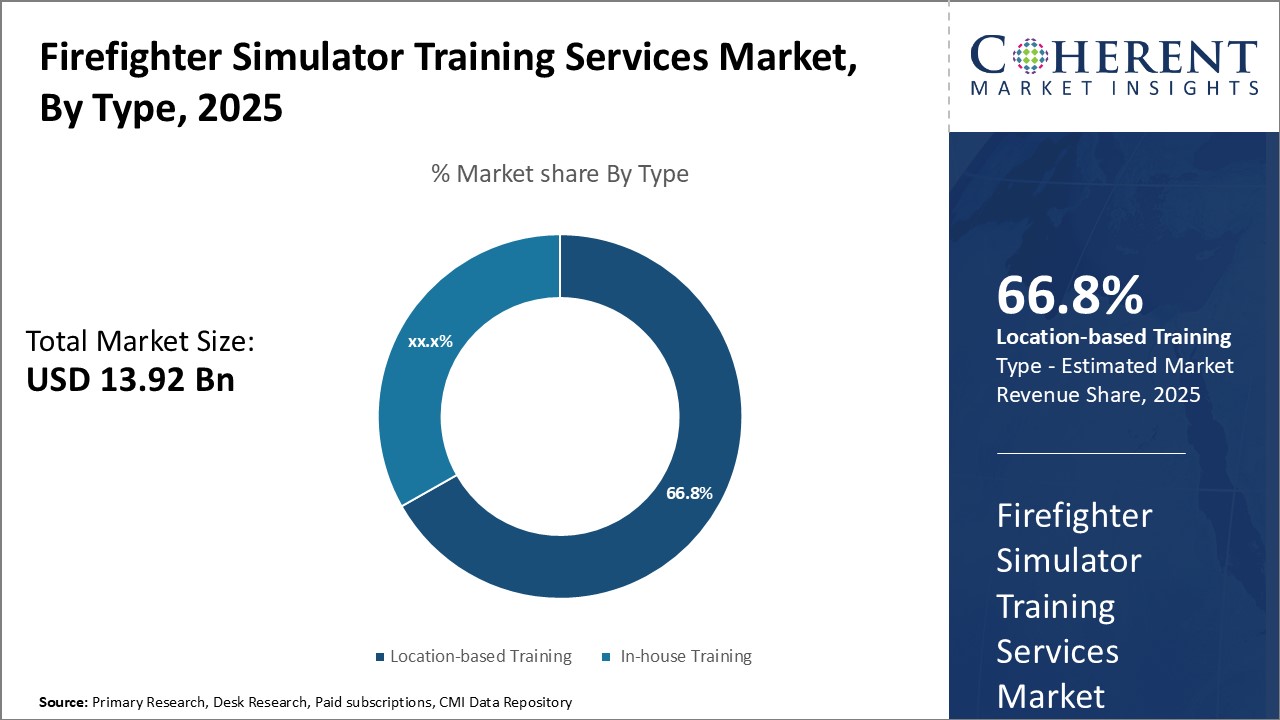
Discover high revenue pocket segments and roadmap to it: Request sample copy
Insights, By Type- Flexibility and cost-effectiveness drives the in-house training segment growthAmong type, in-house training segment is estimated to contribute the highest share owing 66.8% in 2025 of firefighter simulator training services market due to its flexibility and cost-effectiveness for organizations. In-house training allows fire departments to customize training scenarios and curriculums according to their unique needs and risks. These can focus training on specific hazards, equipment, or tactics relevant to their jurisdiction. This tailoring ensures personnel are well prepared for the exact situations and emergencies these may encounter on the job.
Rather than sending teams off-site for standardized courses, in-house simulators integrate smoothly into existing training schedules. Departments face less disruption of staffing and can train more frequently to maintain skills. Responders also benefit from practicing in a realistic virtual environment very similar to their own stations and vehicles. The authentic setting improves retention of lessons as compared to classrooms.
In-house simulators deliver significant long-term cost savings in addition to performance advantages. Fire departments avoid travel, lodging, transportation and other expenses of off-site training programs over time. Much of the initial investment in equipment is later recouped. Simulator technology also continues advancing, so units can be upgraded incrementally.
Some departments collaborate regionally by sharing expensive high-fidelity simulators on a rotating basis. This inter-agency cooperation maximizes equipment utilization and access while preserving localized training relevant to each community. It demonstrates how the versatile, scalable nature of in-house options drives their widespread preference over other alternatives.
Insights, By Simulator Type- Fire driving simulation leads market owing to its foundational role
Among simulator type, fire driving simulator segment is estimated to hold the highest market share owing 37.2% in 2025 due to its paramount importance in initial and recurrent training. Driving fire trucks safely and effectively to emergency scenes under high stress is a fundamental yet complex skill. A single accident can risk lives and damage costly vehicles. It is clearly inadvisable to learn such skills during real operations.
High-fidelity fire driving simulators immerse operators in virtual environments that realistically replicate vehicle dynamics, emergency lights and sirens, road conditions like grades and turns, and traffic scenarios. Trainees practice operating apparatus with precision while responding code to different emergency calls. Instructors can introduce challenging scenarios involving narrow roads, poor visibility or cooperative driving tasks. Individual performance including speed, signaling and safety are analyzed for debriefing.
Mastering driving fundamentals with a simulator helps operators apply proper procedures once certified for emergency response. The risk-free environment also supports remediation for any drivers needing remedial training or re-qualification. Advanced simulators now integrate with live-fire props to prepare drivers for strategic vehicle positioning during operations. Given its importance as the gateway skill to emergency response, fire driving simulation delivers high returns on training investment to ensure proficiency and safety.
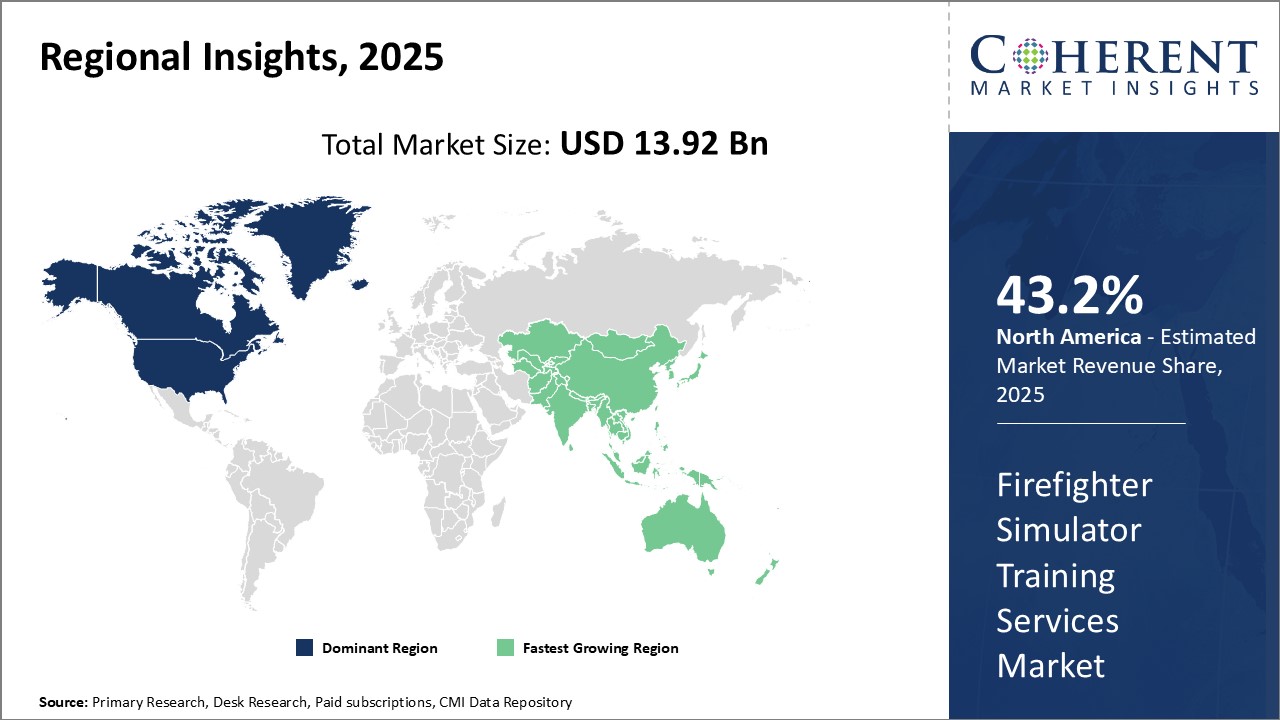
Need a Different Region or Segment? Customize now
North America has been the dominant region in the global firefighter simulator training services market owing 43.2% in 2025. This regional market growth can be attributed to the strong presence of simulation training providers and higher adoption of advanced training methods in this region. Countries like the U.S. and Canada have robust fire & rescue departments across municipalities that have benefited from regular simulator based training of firefighters. The focus on improving skills through simulation has helped to tackle complex fire scenarios in a safe, controlled environment.
With growing fire risks due to urbanization and industrialization, government organizations and private bodies involved in public safety have increased spending on simulation led training programs. Regional providers have also established wide distribution networks to serve customer needs across North America. The large training requirements have encouraged investments that provide customized and scalable solutions, thus, driving the market growth in the region. Moreover, North America has been at the forefront of simulator technology development, ensuring the availability of high-fidelity, cost-effective systems.
Asia Pacific region has emerged as the fastest growing market for firefighter simulator training services in recent years. Rapid industrial and infrastructural growth coupled with expanding urban limits in nations such as China, India and Southeast Asian countries has boosted fire risks. Improving economic conditions have allowed more municipalities and corporate houses to invest substantially in staff training. Thus, demand for sophisticated yet affordable simulation training from regional as well as global suppliers has surged. With rising incomes and greater awareness about safety preparedness, this demand is likely to continue its upwards trajectory.
Countries like China and India also offer attractive opportunities owing to their sizable Address: populations and ambitious plans to strengthen emergency response frameworks. Solution providers have, hence, been quick to capitalize on the APAC market by establishing local manufacturing and support centers. Strong economic growth fundamentals as well as evolving safety standards and regulations can boost adoption of firefighter simulator training services in Asia Pacific.
Firefighter Simulator Training Services Market Report Coverage
| Report Coverage | Details | ||
|---|---|---|---|
| Base Year: | 2024 | Market Size in 2025: | USD 13.92 Bn |
| Historical Data for: | 2020 To 2024 | Forecast Period: | 2025 To 2032 |
| Forecast Period 2025 to 2032 CAGR: | 5.6% | 2032 Value Projection: | USD 20.40 Bn |
| Geographies covered: |
|
||
| Segments covered: |
|
||
| Companies covered: |
Canadian Emergency and Risk Management (CERM), Delaware State Fire School, Falck Denmark A/S, Fire Service College Limited, International Fire Training Center, Lakeland College, Lambton College, Louisiana State University, NorQuest College, Nova Scotia Firefighters School, Oklahoma State University, Parkland College, PetroSafe Technologies, Inc., Sakra Emergency Response Brigade, South Carolina Fire Academy, Texas A&M Engineering Extension Service |
||
| Growth Drivers: |
|
||
| Restraints & Challenges: |
|
||
Uncover macros and micros vetted on 75+ parameters: Get instant access to report
*Definition: Firefighter Simulator Training Services Market provides realistic firefighting simulator training programs and services to fire departments and firefighting academies. These immersive simulation trainings allow firefighters to practice responding to fire emergencies, search and rescue missions, and hazardous materials incidents in a fully controlled and safe simulated environment. The virtual trainings help improve firefighters' skills and decision-making without risking lives so these are better prepared to handle real fire emergencies.
Share
Share
About Author
Gautam Mahajan is a Research Consultant with 5+ years of experience in market research and consulting. He excels in analyzing market engineering, market trends, competitive landscapes, and technological developments. He specializes in both primary and secondary research, as well as strategic consulting across diverse sectors.
Missing comfort of reading report in your local language? Find your preferred language :
Transform your Strategy with Exclusive Trending Reports :
Frequently Asked Questions
Joining thousands of companies around the world committed to making the Excellent Business Solutions.
View All Our Clients
US Reciprocal Tax Impact Analysis On Firefighter Simulator Training Services Market
Stay updated on tariff changes with expert insights and timely information